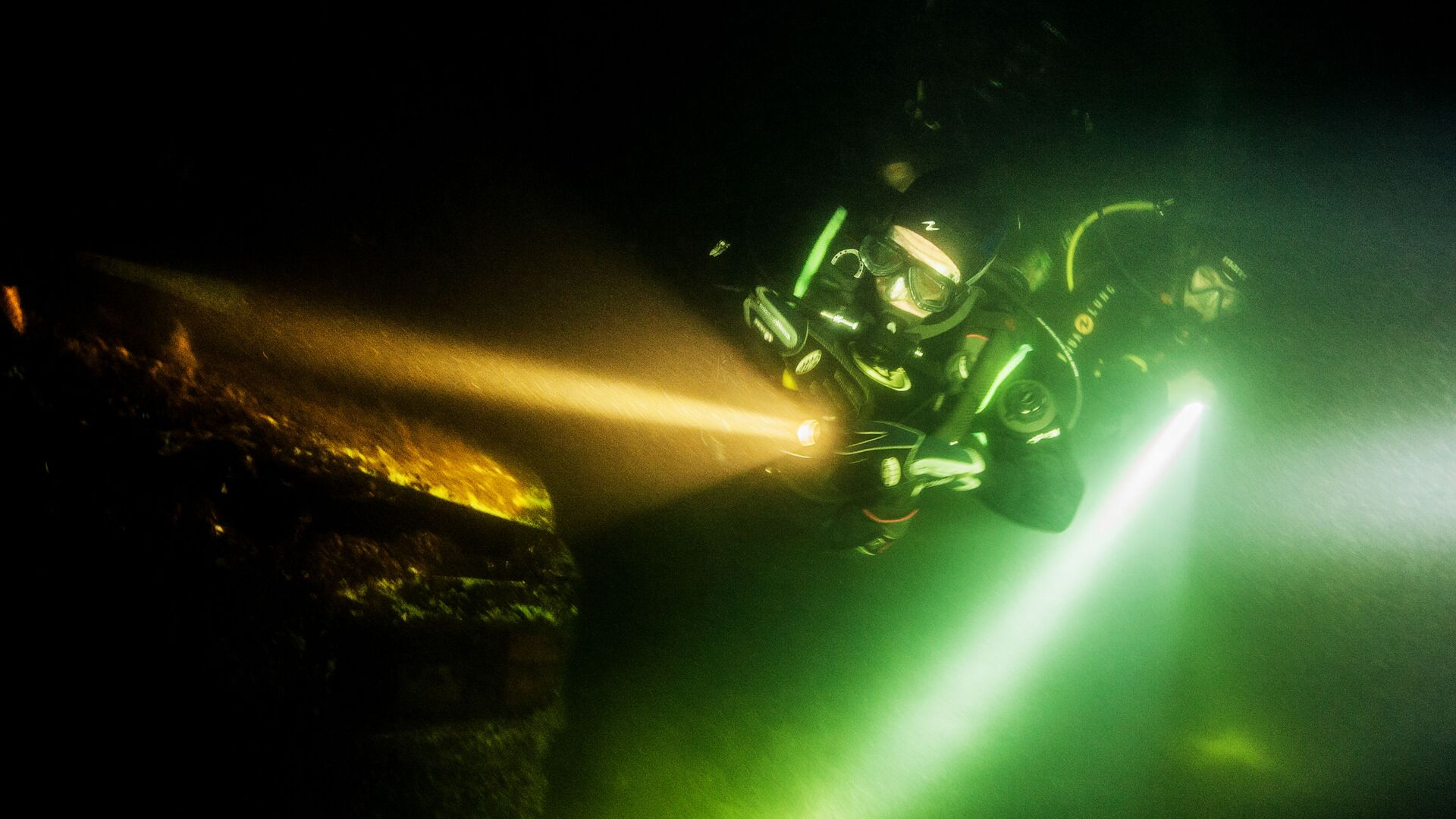https://sputnikglobe.com/20230701/mazarron-ii-spanish-archeologists-race-against-time-to-recover-iconic-ancient-ship-1111599639.html
Mazarron II: Spanish Archeologists Race Against Time to Recover Iconic Ancient Ship
Mazarron II: Spanish Archeologists Race Against Time to Recover Iconic Ancient Ship
Sputnik International
The shipwreck, located merely 60 meters from Mazarron's Playa de la Isla, requires immediate attention for preservation.
2023-07-01T09:50+0000
2023-07-01T09:50+0000
2023-09-01T13:22+0000
beyond politics
science & tech
russia
spain
murcia
valencia
iberian peninsula
https://cdn1.img.sputnikglobe.com/img/107613/36/1076133600_0:171:3072:1899_1920x0_80_0_0_8b43d8a849eb2fc6215a76920398ba29.jpg
Archaeologists in Spain are racing against time to preserve a 2,500-year-old Phoenician relic, the Mazarron II, situated off Spain's Murcia coast. Threatened by storms, this invaluable antique could suffer irreversible damage.A nine-member team of Spanish archeologists from the University of Valencia-Institute of Nautical Archaeology embarked on an intensive two-week scuba diving operation in June. They painstakingly spent 560 hours surveying and documenting the ship's fragile state, documenting each fissure.Before the year's end, expert strategies for recovering the shipwreck could be proposed, possibly as early as the following summer. The possibility of an intricate procedure of extraction and reassembly of the wreckage, akin to a jigsaw puzzle, is one of the propositions, suggests Carlos de Juan, an archaeologist from the University of Valencia-Institute of Nautical Archaeology who is overseeing the project.This implies the preference for an accessible and secure display of the ship over constant anxiety about potential storm-induced damages.The Mazarron II, instrumental in the Phoenician's Mediterranean trading network, which lasted from 1,500 BC to 300 BC, offers a unique historical perspective. Historians have used the vessel, thought to have been built around 580 BC, to study the ancient transportation of metals, notably lead, from the Iberian Peninsula.For more than 2,000 years, the shipwreck remained concealed beneath sediment deposits, only to be revealed nearly three decades ago as a result of alterations in sea currents caused by coastal construction.The wreck now nestles under approximately 1.7 meters (5.6 ft.) of the remarkably transparent Mediterranean waters, encircled by a protective barrier of sandbags and a custom-built metal structure. However, the protective structure began sinking faster than the wreck itself, posing a potential threat to crush the historical artifact. Therefore, it necessitated a partial removal to ensure the wreck's safety.
russia
spain
murcia
valencia
iberian peninsula
Sputnik International
feedback@sputniknews.com
+74956456601
MIA „Rossiya Segodnya“
2023
Chimauchem Nwosu
https://cdn1.img.sputnikglobe.com/img/07e7/09/01/1113046371_0:99:1536:1635_100x100_80_0_0_9c5c627283eca931c39fe4852bbb301c.jpg
Chimauchem Nwosu
https://cdn1.img.sputnikglobe.com/img/07e7/09/01/1113046371_0:99:1536:1635_100x100_80_0_0_9c5c627283eca931c39fe4852bbb301c.jpg
News
en_EN
Sputnik International
feedback@sputniknews.com
+74956456601
MIA „Rossiya Segodnya“
Sputnik International
feedback@sputniknews.com
+74956456601
MIA „Rossiya Segodnya“
Chimauchem Nwosu
https://cdn1.img.sputnikglobe.com/img/07e7/09/01/1113046371_0:99:1536:1635_100x100_80_0_0_9c5c627283eca931c39fe4852bbb301c.jpg
phoenician shipwreck, mazarron ii, murcia, spain, university of valencia, institute of nautical archaeology, preservation effort, scuba diving operation, surveying and documenting, fragile state, preservation strategies, extraction and reassembly, carlos de juan, museum exhibition, phoenician mediterranean trading network, historical perspective, transportation of metals, lead trading, sediment deposits, sea currents, mediterranean waters, protective barrier, sinking structure, historical artifact, partial removal, safety measures
phoenician shipwreck, mazarron ii, murcia, spain, university of valencia, institute of nautical archaeology, preservation effort, scuba diving operation, surveying and documenting, fragile state, preservation strategies, extraction and reassembly, carlos de juan, museum exhibition, phoenician mediterranean trading network, historical perspective, transportation of metals, lead trading, sediment deposits, sea currents, mediterranean waters, protective barrier, sinking structure, historical artifact, partial removal, safety measures
Mazarron II: Spanish Archeologists Race Against Time to Recover Iconic Ancient Ship
09:50 GMT 01.07.2023 (Updated: 13:22 GMT 01.09.2023) The shipwreck, located merely 60 meters from Mazarron's Playa de la Isla, requires immediate attention for preservation.
Archaeologists in Spain are racing against time to preserve a 2,500-year-old Phoenician relic, the Mazarron II, situated off Spain's Murcia coast. Threatened by storms, this invaluable antique could suffer irreversible damage.
A nine-member team of Spanish archeologists from the University of Valencia-Institute of Nautical Archaeology embarked on an intensive two-week scuba diving operation in June. They painstakingly spent 560 hours surveying and documenting the ship's fragile state, documenting each fissure.
Before the year's end, expert strategies for recovering the shipwreck could be proposed, possibly as early as the following summer. The possibility of an intricate procedure of extraction and reassembly of the wreckage, akin to a jigsaw puzzle, is one of the propositions, suggests Carlos de Juan, an archaeologist from the University of Valencia-Institute of Nautical Archaeology who is overseeing the project.
Speaking to journalists, de Juan stated, "It is more reasonable to rescue the ship, treat it and exhibit it in a museum for people to enjoy it, rather than worrying every time a big storm arrives."
This implies the preference for an accessible and secure display of the ship over constant anxiety about potential storm-induced damages.
The Mazarron II, instrumental in the Phoenician's Mediterranean trading network, which lasted from 1,500 BC to 300 BC, offers a unique historical perspective. Historians have used the vessel, thought to have been built around 580 BC, to study the ancient transportation of metals, notably lead, from the Iberian Peninsula.
For more than 2,000 years, the shipwreck remained concealed beneath sediment deposits, only to be revealed nearly three decades ago as a result of alterations in sea currents caused by coastal construction.
The wreck now nestles under approximately 1.7 meters (5.6 ft.) of the remarkably transparent Mediterranean waters, encircled by a protective barrier of sandbags and a custom-built metal structure. However, the protective structure began sinking faster than the wreck itself, posing a potential threat to crush the historical artifact. Therefore, it necessitated a partial removal to ensure the wreck's safety.



